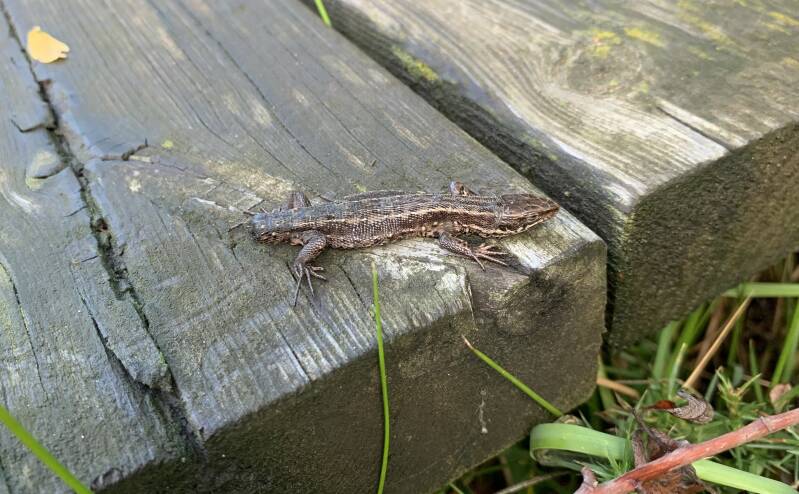Pirbright Ranges Circular
Basingstoke Canal, wet woodland, farmland, heaths and Folly Bog.
This text is not the Step by Step walk description as that is in the document elsewhere on this page.
The nature summary is long and can usefully fill this space. The path to Frimley Lock has a selection of trees worthy of identification - great for children to learn.
At the Lock birds like grey wagtails and possibly kingfishers may be seen, also birds on the lock cottage feeders. Walking along the canal can be a delight at any time of year. In late summer wildflowers are all along the bank. There will also be woodland birds like nuthatch and treecreeper, chiffchaffs and great spotted woodpeckers.
On the canal itself mallard, moorhen and possibly coot are usually present, canada geese will also appear at times. In winter other wildfowl could turn up. Just before Brookwood Lock terrapins live. They come out of the water to rest on the exposed wood there amongst the reeds and yellow irises.
Sheet's Heath area is wet woodland so woodland birds are most likely seen here throughout the year. All the tit species, probably goldcrest and woodpeckers again. The open grassland here is surrounded by gorse, bright yellow in spring and butterflies can be found.
The path to Bullhousen Farm is similar and then becomes farm tracks. There is little arable land around here now so the land is for grazing. You may encounter cattle or horses, maybe some sheep. The farm track has good hedgerows so birds and butterflies should be easily seen and heard. Linnets are possible but Yellowhammers unlikely. Chiffchaffs may be heard singing or calling from March through to September.
When you reach the heath you can start finding the different types of heather, bell heather, cross - leaved and common ling. You should see Stonechats, always perched conveniently on the top of a shrub, gorse or sapling, maybe as low as the heather. Dartford warblers are more likely at Brentmoor Heath, the second heathland section.
Butterflies on the heaths are likely to be interesting. Aside from more common species graylings and silver-studded blues are a great find. Other birds like woodlark, meadow pipit and tree pipit are possible and even a hobby may appear. Buzzards and red kites could appear anywhere. You may also be lucky enough to find a redstart singing closeby in the MoD ranges.
Folly Bog is important for reptiles but they are not easy to see. In early spring adders and grass snakes may come out onto path edges to warm up in the morning sun. Slow worms are easier to see while common lizards, while present need a sharp eye to spot.
In summer butterflies and day flying moths can be found almost anywhere and wildflowers will pop up anywhere along the tracks. At the end look out for the horse chestnut trees and conkers in August.
Given enough time you can have a really nature spotting great day on this walk but it needs plenty of time. Take some refreshments, especially water on a hot day.
Common Redstart
Common Lizard (lost tail)
Rate this walk




